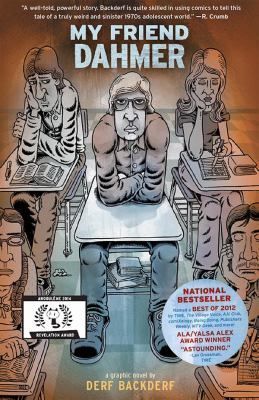
My Friend Dahmer
Includes eBook exclusive bonus material! You only think you know this story. In 1991, Jeffrey Dahmer, the most notorious serial killer since Jack the Ripper, seared himself into the American consciousness. To the public, Dahmer was a monster who committed unthinkable atrocities. To Derf Backderf, ôJeffö was a much more complex figure: a high school friend with whom he had shared classrooms, hallways, and car rides. In My Friend Dahmer, a haunting and original graphic novel, writer-artist Backderf creates a surprisingly sympathetic portrait of a disturbed young man struggling against the morbid urges emanating from the deep recesses of his psyche; a shy kid, a teenage alcoholic, and a goofball who never quite fit in with his classmates. With profound insight, what emerges is a Jeffrey Dahmer that few ever really knew, and one readers will never forget.
Reviews
rumbledethumps@rumbledethumps
Lynn Braden@ftbooklover
Melissa@melg4
Caroline Lewicki@clewicki20
Carol@carol_reads_everything
Jimena Vázquez Oliver@lookatjimmy
Tiffany Robinson@movietiffany
Emily@readem
Bec@becandbooks
b.andherbooks@bandherbooks
Laura@lastblues13
Sam@cinderwraith
Chloé@misslola44
Taylor Nuzzolo@taynuzz
A Freckled Bookwyrm@afreckledbookwyrm
Elaine Wherry@proofedpudding
Nora @ngoldie
Cindy Sharp@cninnys
Michelle Stiles@meeshandmarv
Mahogany Skillings@bibliogeekgirl
Kate Lao Shaffner@kls
Jaurtzie @jaurtzie
Abby Byers@librarianabby
Richard Binder@scottmichael